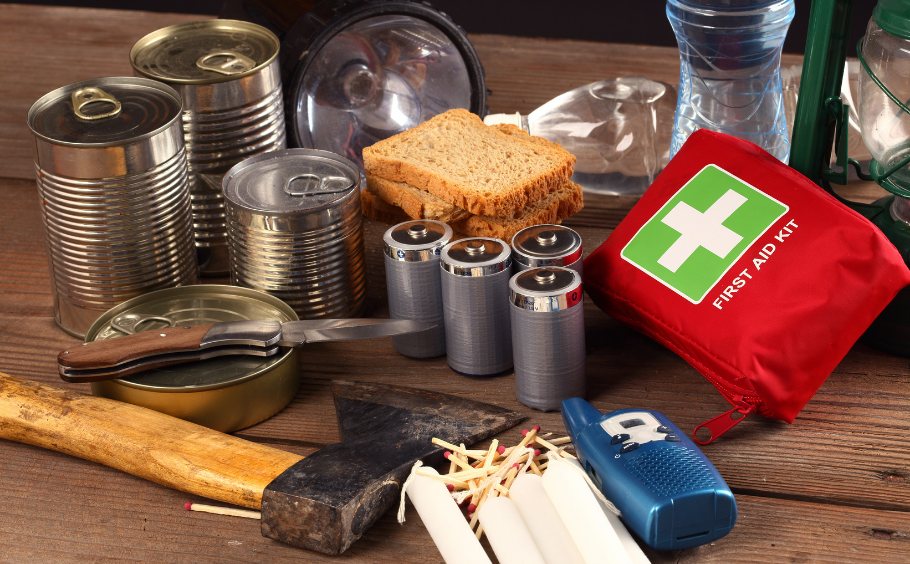

Shelter at Home
Far too often, articles about sheltering in place concentrate on lists of emergency items without delving into specifics on their use or offering specific tips that could be helpful in such an event. We all know that we will need food, water, medicines, flashlights, and sanitation supplies. Lists of such items appear in the following links online that offer a good array of preparedness.
For the purpose of this article, we would like to focus on some specific items and concepts that would help you and your family, if such an event does occur in your area. While many of the items listed in emergency kits are applicable to most events, there are some specifics that apply to differing situations. Much of this can be broken down into warm and cold weather natural disasters.
Warm weather natural disasters include hurricanes, tornadoes, and large scale power outages. Cold weather events include blizzards and other winter weather events. The duration of any event will often determine what you will need and what specific action may be required. The following are some specifics and some tips to help you in these events.
Lighting
- Flashlights using LEDs (light emitting diodes) can last up to 5-7 times longer than older flashlights that use conventional bulbs. Some mid priced LED flashlights also have adjustable light levels allowing you to use the right amount of light for the specific situation you may encounter.
- LED headlamps offer great versatility and safety by allowing you to work having both hands free
Radios
- A portable radio that can receive local broadcasts and be powered from batteries, hand crank, or solar power is the most effective solution to being informed and updated on any situation. A NOAA weather radio is also a good addition as it will alert you to various hazards in your area.
Phones
- It is important to realize that many of the internet based phone services, as well as cable TV are likely to be inoperative after 6-8 hours of power loss due to cable company batteries being depleted in their distribution lines. This often means that the only phone communications could be older conventional phone lines and cell phones. If you are relying on conventional phones, remember to have one that is NOT cordless, as cordless phones require power. Cell phones should have a portable charger that can use regular alkaline batteries to charge your phone. These are available from numerous retail sources and online.
Refrigeration
- Keeping your refrigerator cold is often a big concern for people. In a long duration event, this may not be possible without a generator. In a short duration event, it is possible to prolong refrigeration by using ice. If the event is one that had warning time, making good quantities of ice and putting it in the freezer and refrigerator can extend their effectiveness at retaining cold temperatures for a considerable period after a power loss.
Heating
- Although space heaters are often discouraged due to carbon monoxide, a well maintained fireplace can offer significant warmth if used in a safe way. Use of plastic sheeting to keep as much warm air in your emergency living space is crucial. The area need not be air tight – just enough to prevent large volumes of warm air from leaving too quickly. This needs to be combined with closing off unused rooms in your dwelling for maximum heat conservation.
Food
- Foods that do not require cooking are the most prudent to have. Just remember to have a manual can opener in your kit. Prepackaged emergency food is also available from many retail outlets such as camping supply stores or from online sources. Remember that water freezes and expands in cold weather. Make sure you use plastic water storage and not glass bottles as they will break easily upon freezing.
Tools
- Most emergency articles concentrate on multi-purpose tools for use in an event. What is often forgotten is the need to also deal with the effects of weather, hot and cold on items that require tools to operate. In warm weather, use WD-40 for stuck valves and locks. In the cold environments, use de-icer to free up frozen parts, then WD-40 if needed.
Having the items you require will increase your chances of a good outcome during times of disaster. Knowing why and how to use those items will enhance your chances even more.




